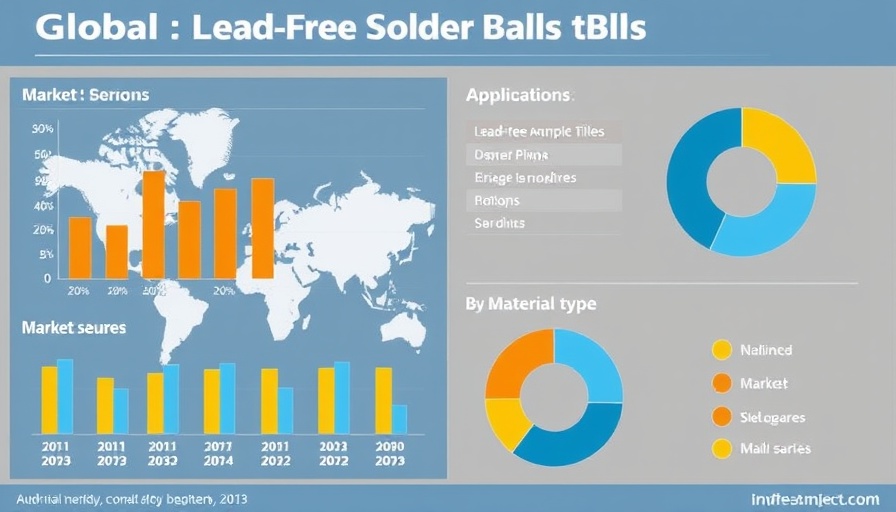
The Rise of Lead-Free Solder Balls: An Eco-Friendly Shift
The global lead-free solder balls market is on an upward trajectory, expected to reach an impressive USD 14.26 billion by 2030, expanding at a compound annual growth rate (CAGR) of 7.25% from 2024 to 2030. This growth is primarily fueled by a shift towards sustainable manufacturing practices in the electronics sector. As regulations tighten around hazardous materials, manufacturers are adopting eco-friendly alternatives. Notably, lead-free solder balls, often referred to as solder bumps, provide a safer connection for electronic devices.
Regulatory Drivers and Market Demand
The push for lead-free materials in electronics manufacturing comes largely from stringent environmental regulations, such as the Restriction of Hazardous Substances (RoHS) directive. These regulations have accelerated the demand for lead-free options, particularly in the automotive and semiconductor industries where the complexity of devices is increasing. Manufacturers are not only complying with regulations but are also enhancing their production capabilities to meet consumer expectations for longer-lasting, reliable products.
Emerging Trends Shaping the Future
Looking ahead, key trends such as the advancements in semiconductor packaging technologies and increased application of lead-free solder balls emphasize their growing significance. Innovative approaches such as Ball Grid Arrays (BGA) and Chip-on-Board (COB) technologies are setting the stage for future developments. Countries like Japan are at the forefront of these advancements, pouring resources into R&D to refine lead-free soldering processes, while Singapore and various European nations are championing sustainability in manufacturing.
Conclusion: A Sustainable Future Ahead
The future of the lead-free solder balls market looks promising, with continuous advancements not just in product technology but also in break-through sustainability practices. As the market burgeons towards this eco-friendly approach, stakeholders must remain cognizant of evolving standards and innovations to harness potential growth as we transition towards a more sustainable electronic manufacturing landscape.
 Add Row
Add Row  Add
Add 




Write A Comment